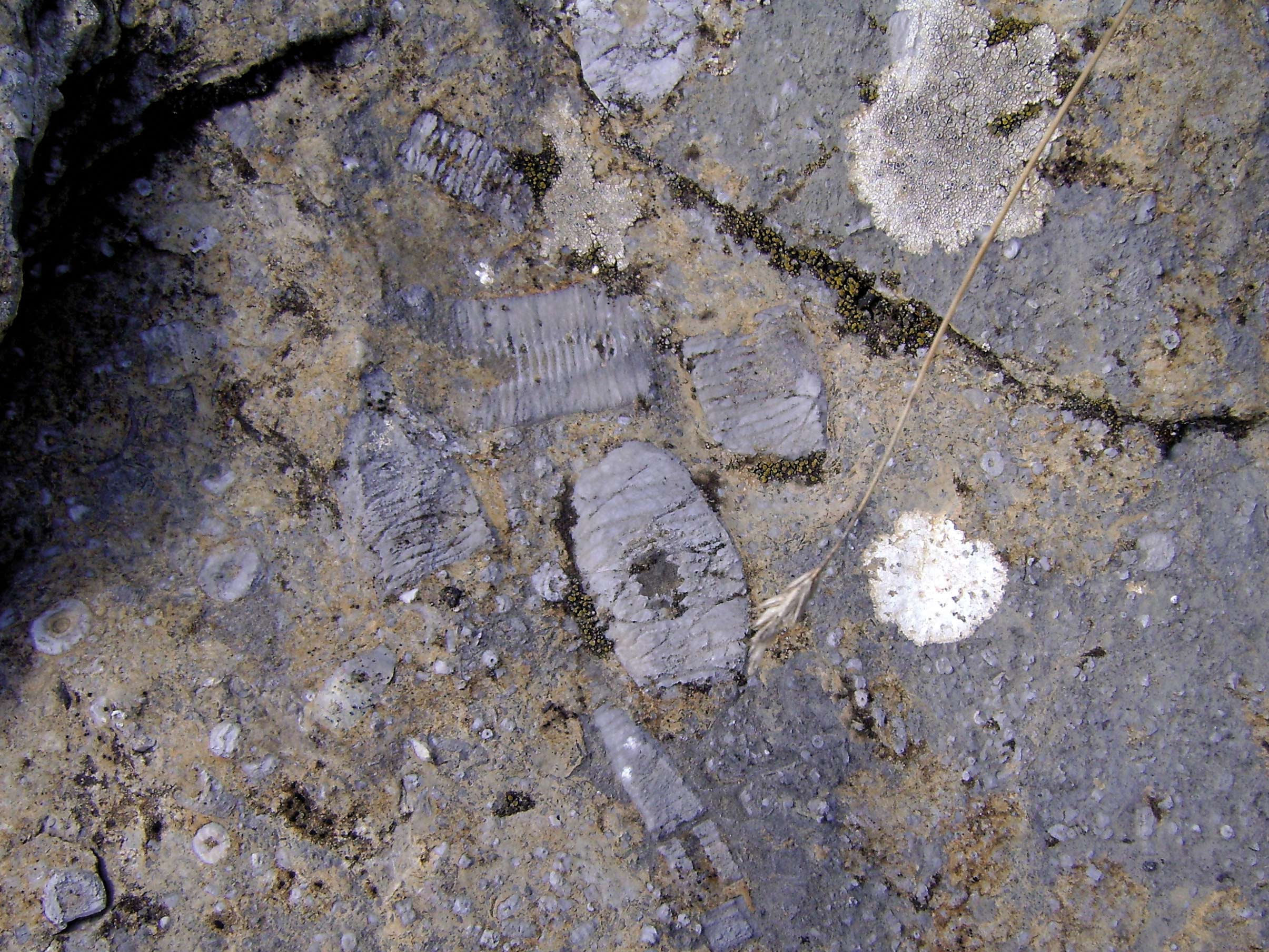This site too was once part of a continuous limestone plateau which has broken down in the past into three smaller units. Remnants of this former extensive limestone platform can be found between the Zollner and Nassfeld regions. In contrast to the last stopping point, large fossils such as sea lilies or crinoids dominate this locality. Calcareous algae, chambered microorganisms and fossilised snails can also be found in some of the limestone beds. Sea lilies derive their name from their flower-like appearance, but they are in fact animals and still populate our seas today. They are attached to the sea bed by their ‘holdfasts’ (roots). The top end of the stalk is formed by a kind of flower, the so-called crown, from which arms and feather-like tentacles extend to grasp for plankton. The individual parts of the animal’s hard components, which are chalk-based, are held together by a ligament, but fall apart once the animal has died. As a result, it is rare to find complete sea lilies. Usually it is only possible to find parts of the stalk, as is the case here.
Cerca
Ultimi Post
- The temporary exhibition “The Wonders of the Underworld – Ampezzo, 20th June 2020
- The Geological Museum in Ampezzo opens next Saturday
- The temporary exhibition “Fossil fish from the Friulian Alps” opens again
- Coronavirus Emergency – extraordinary closing
- Presentation conference – book “INSIDE THE CARNIC ALPS” – Udine, 25th June 2019

